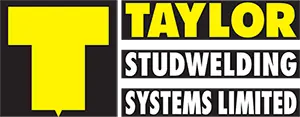

Whether you're a seasoned fabricator looking to diversify your skillset or a newcomer to metalworking, stud welding is one of the most efficient and reliable fastening methods available today. In 2025, as industries continue to prioritise speed, structural integrity, and cost-effectiveness, stud welding is a process that is proving more essential than ever.
In this guide, we’ll break down everything you need to know to get started with stud welding - from how it works and what equipment you need, to choosing the right machine and materials for your application.
What Is Stud Welding?
Stud welding is a process that joins a metal stud (or fastener) to a metal base by creating a high-temperature fusion weld in milliseconds. Unlike bolting or riveting, it doesn’t require holes, back access, or secondary fixing components.
The result? A strong, permanent bond that’s both fast to achieve and clean in finish.
Types of Stud Welding
There are several stud welding methods, but the two most widely used are:
1. Capacitor Discharge (CD) Stud Welding
Best for: Thin sheet metal, decorative or precision applications
Materials: Mild steel, stainless steel, aluminium
Stud size: Typically M3–M8
Benefits: Fast (1–3 milliseconds), no surface marking, low heat input
Typical applications: Electrical panels, enclosures, HVAC, signage, automotive trim
2. Drawn Arc (DA) Stud Welding
Best for: Structural and load-bearing applications
Materials: Mild steel, stainless steel, other ferrous metals
Stud size: Typically M6–M25+
Benefits: Deeper penetration, strong welds, supports large studs
Typical applications: Construction, shipbuilding, heavy equipment, bridgework
What Equipment Do You Need?
To start stud welding, you’ll need:
Stud Welding Machine as a Power Source
The core unit of the machine stores and delivers energy to create the stud weld. Choose your suitable stud welding machine based on the welding process and stud size. Each machine requires a specific power supply to operate. Take a look at our article on stud welding power supply for more information on this.
Welding Gun
The handheld tool that positions and fires the stud onto the base material. CD and DA guns differ in mechanism and configuration. You can find lots of information about which hand tools are suitable for which stud welding machine on our website. Alternatively, our expert team is always happy to provide you with advice.
Weld Studs
Fasteners designed specifically for stud welding are available in a variety of sizes, threads, and materials. Have a look at the range available and download our weld stud catalogues. Taylor Studwelding holds over 10 million items in stock, so we are sure to be able to supply you with the specific weld studs for your project.
Earth Clamp and Cables
These are essential components for completing the electrical circuit safely and efficiently. These accessories provide a low-resistance path for the electrical current to pass back to the power source safely, preventing electrical hazards in the welding process.
Best Machines to Get Started With in 2025
At Taylor Studwelding, we’ve developed a range of machines ideal for beginners and professionals alike:
CDi Capacitor Discharge Stud Welding Range
Lightweight, compact, and easy to use
Digital control interface for precision
Dual voltage 110V/240V makes the unit ideal for working on site where power supply availability may vary.
CDM Capacitor Discharge Stud Welding Range
Compact yet powerful
Excellent entry-level CD system for M3–M8 studs
Available as both 110V and 240V supply models
Robust construction suitable for use in industrial environments
Perfect for newcomers working on thin materials
Drawn Arc Stud Welding Range
Best for larger applications requiring high power
Still portable enough for site use
Ideal for users transitioning into structural stud welding
Each machine is backed by UK manufacturing quality and full support from the Taylor Studwelding team, including, training and technical guidance.
Why Choose Stud Welding Over Other Methods?
Here’s how stud welding compares to traditional fastening:
Method | Access Needed | Speed | Strength | Finish |
Stud Welding | Single side | ★★★★★ | ★★★★★ | ★★★★★ |
Bolting | Both sides | ★★☆☆☆ | ★★★★☆ | ★★☆☆☆ |
Riveting | Both sides | ★★☆☆☆ | ★★★☆☆ | ★★☆☆☆ |
Spot Welding | Single side | ★★★☆☆ | ★★★☆☆ | ★★☆☆☆ |
Stud welding leads in efficiency, appearance, and structural integrity.
Tips for Getting Started
Start small: Begin with Capacitor Discharge welding on thin materials to get a feel for the process.
Practice your technique: Consistent pressure and alignment are key for high-quality welds.
Use quality studs: Inferior fasteners can compromise your weld integrity.
Follow safety protocols: Always wear PPE and ensure good grounding. Ensure your technical knowledge of the process is sound before commencing work.
Ready to Get Started?
Stud welding is one of the most accessible and powerful joining methods in modern manufacturing - and with the right equipment, it’s easy to learn. Whether you're fabricating electrical panels, building ship hulls, or assembling architectural facades, stud welding offers unmatched speed, strength, and flexibility.
Need help choosing the right machine or setting up your workshop? Contact the experts at Taylor Studwelding today. We’ll guide you through every step of the process, from selecting the right system to training your team.








